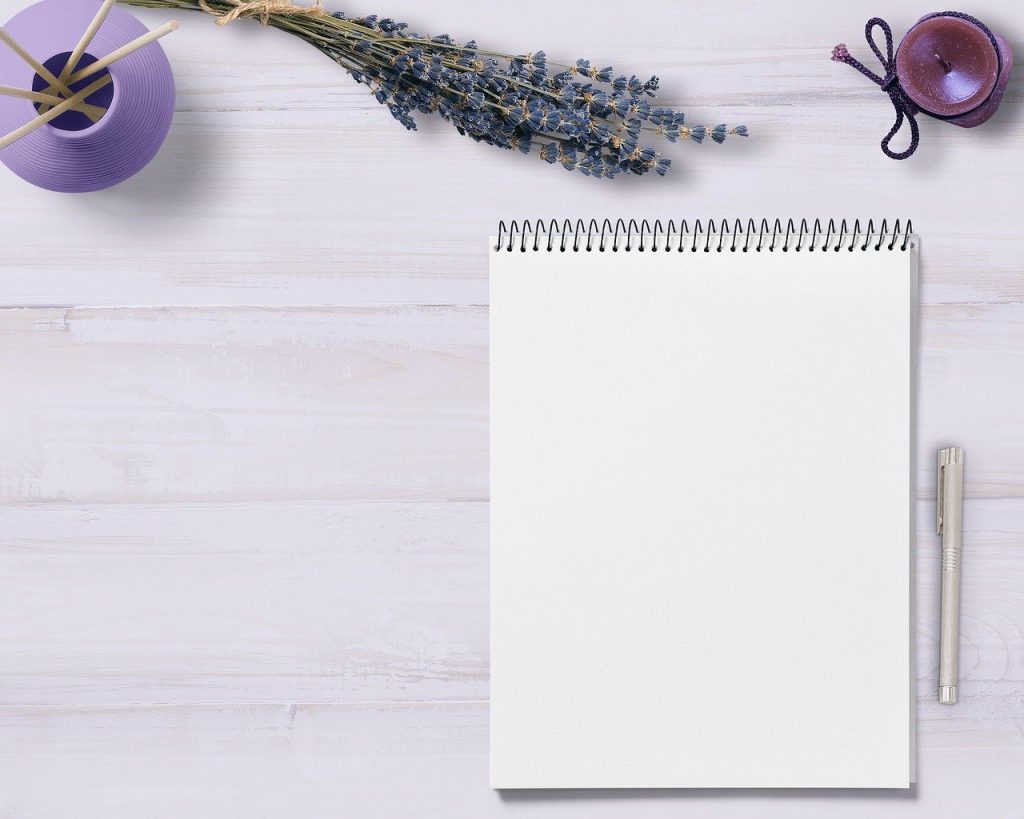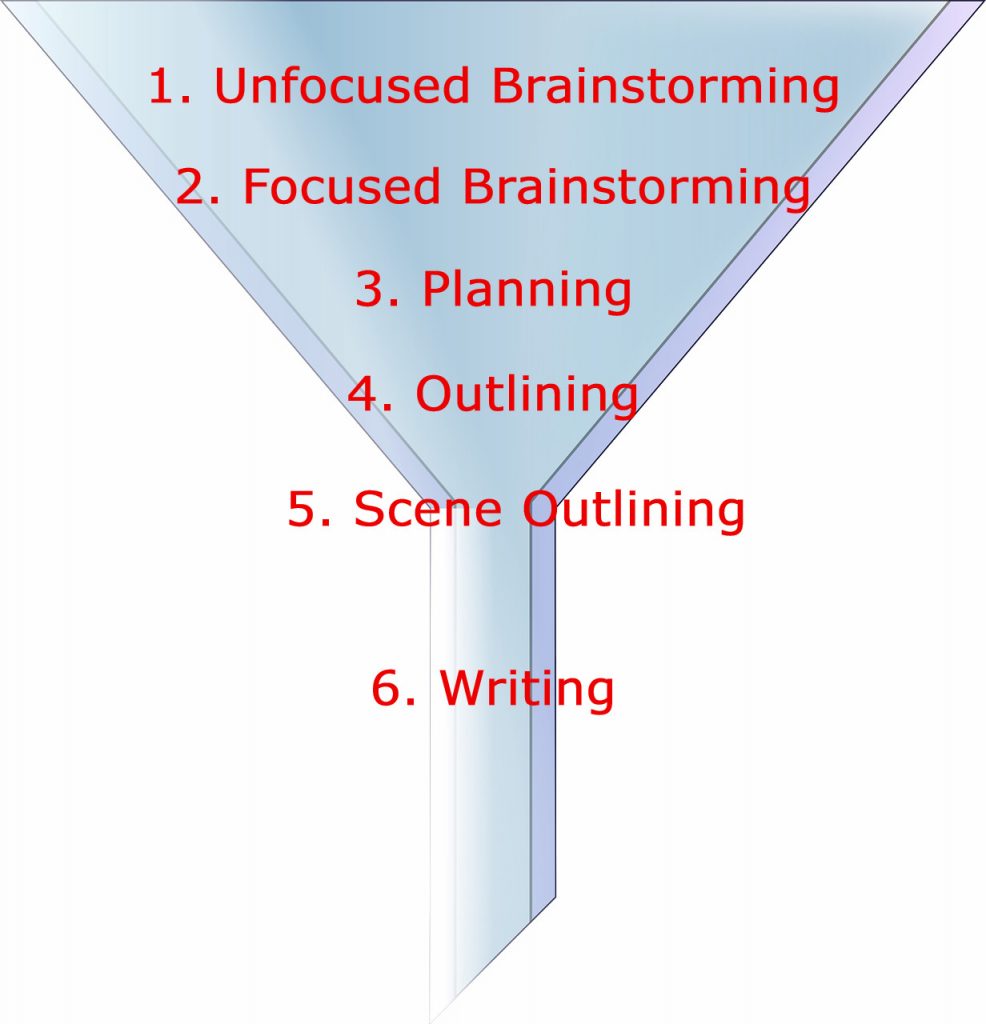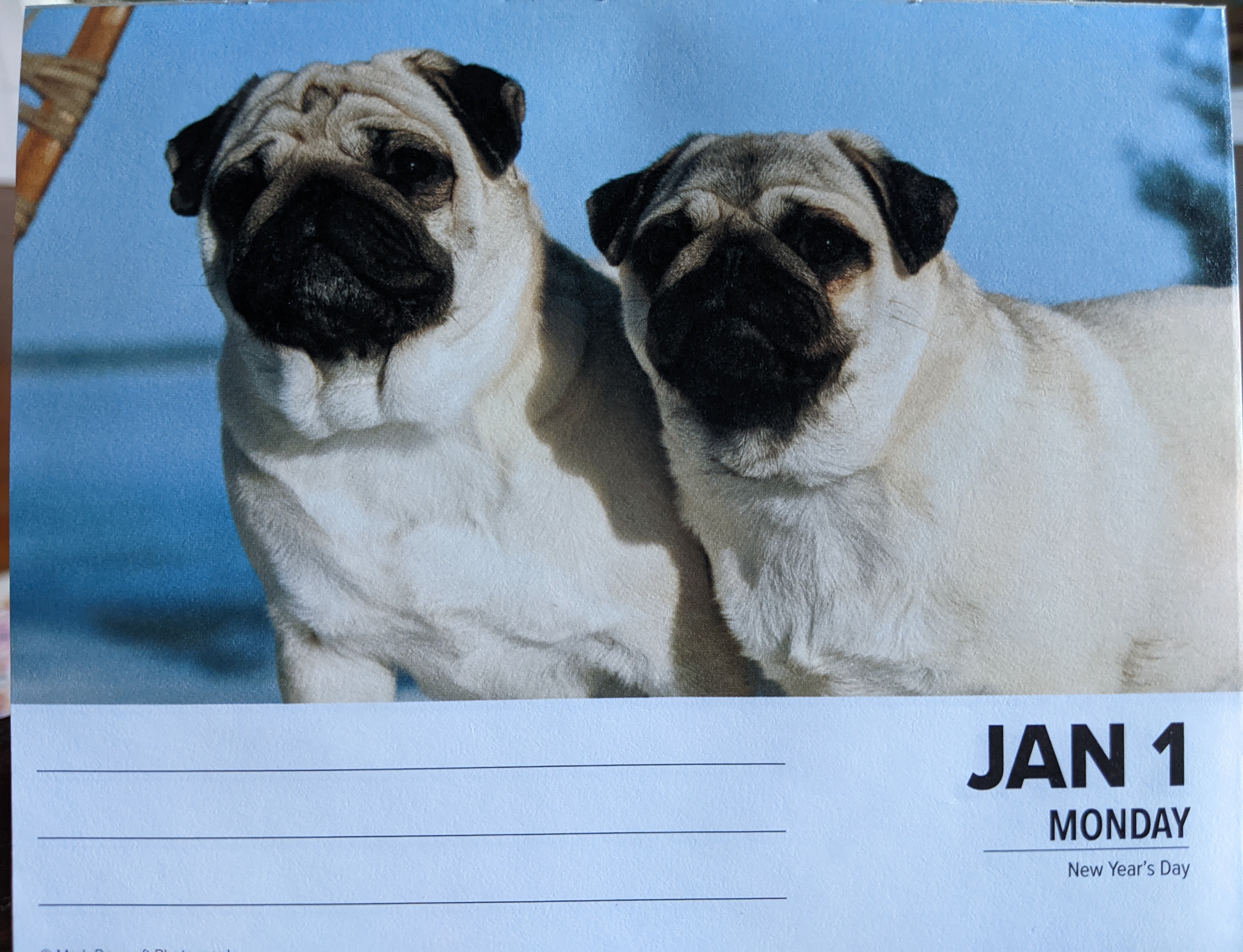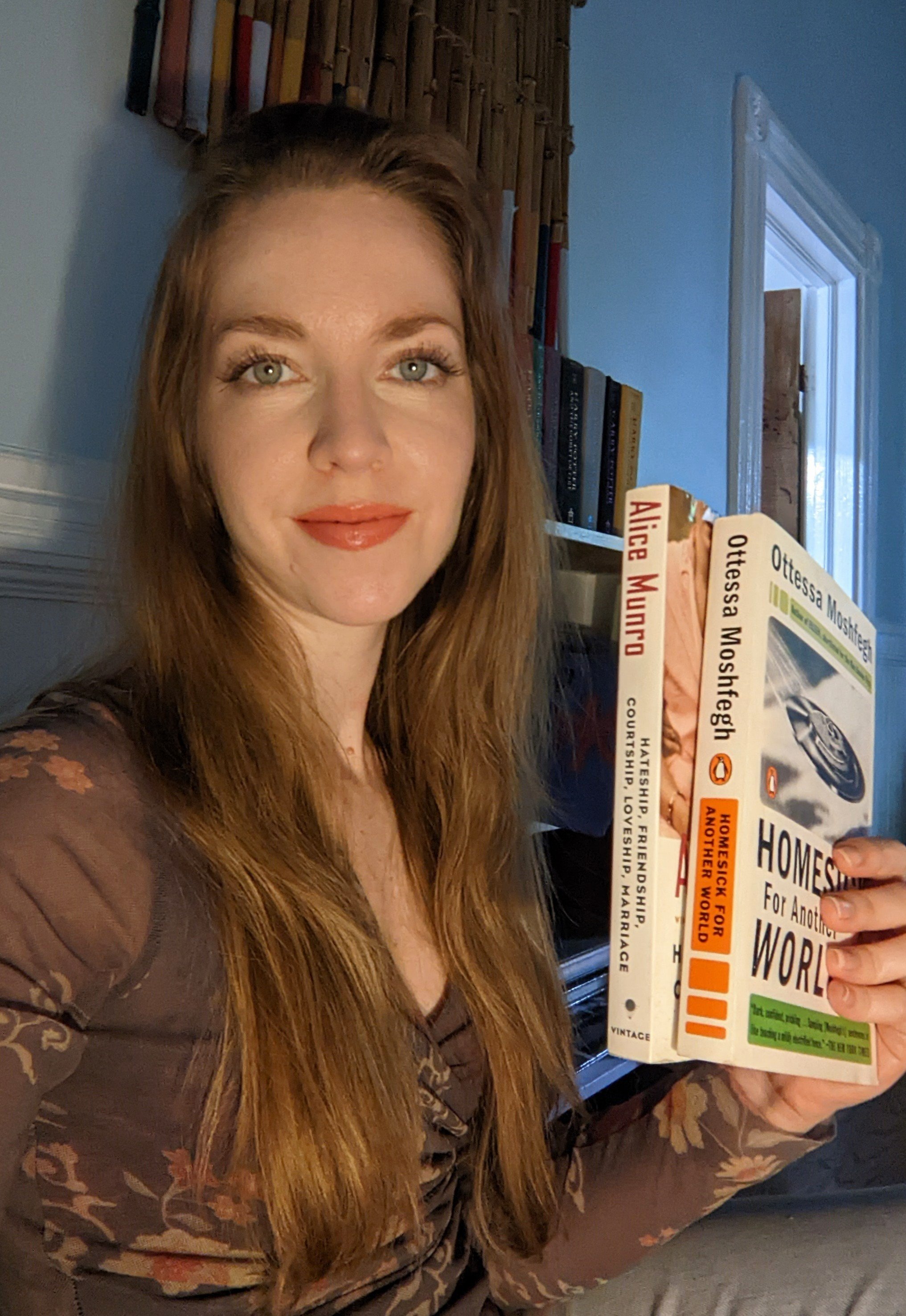So you’ve decided to write a book. So you’re staring at a blank Word document. So what now?

In my last post, I talked about the paradox of creativity: that sometimes putting restrictions on the writing process can push you to tap into your imagination. That article includes my thoughts on why this works, as well as some suggestions for using various writing rules or prompts to get creatively unstuck. Here, I’d like to dive into a specific technique I use to get words down on paper, something I like to think of as The Funnel.
Writing a book (or a screenplay, or even a shorter piece) can seem incredibly daunting at the outset. I’ve written three full novel manuscripts at this point, as well as more screenplays, short stories, and poems than I can count. But if you asked me “How do you write a book?”, I would have no idea how to answer. I look back at things I’ve written sometimes and think “How did I do that?” Not in the sense of “How did I create such an exquisite pearl of genius?” so much as “How did I string together so many coherent words out of nothing?” Because every time I sit down to write a new project, especially something as long and involved as a novel, it feels impossible. And yet, somehow, I do it, one word at a time.
Here’s where The Funnel comes in. When you’re at the start of a new creation, you have an infinite number of possible combinations of words you can use to tell your story. Which is a glorious thought—and a terrifying one. Because how do you pick one out of infinity? I find that the more I can do to narrow down my options, and give myself something concrete to work with instead of just my own meandering thoughts, the more approachable the process becomes.
The Funnel is all about starting as open and easy as possible. Then, as each step gets more focused and concrete, you use the work you’ve done in the previous step to make that step manageable.

1. Unfocused Brainstorming: I like to organize my writing ideas in Word. When I say “organize,” I mean I have one 100-page, single-spaced Word document that I’ve been keeping for 16 years, with a running list of fragments of ideas, separated only by “poetry-ish” and “everything else.” Any time my brain spews out something that makes me think “That could be something,” I add it to this document. Most of these fragments languish untouched forever, which is for the best (I’m looking at this document now, and one line says simply “pimp and circumstance”). But sometimes, there’s an idea that will stick in my head and produce other, related ideas. So as those related ideas pop up, I’ll add them to that section of the document. Maybe I’ve had an idea for a premise for a movie, and later I think of a moment that could happen in the story, or a character to add, or a line that sounds good. I don’t force this brainstorming, I simply record ideas that occur to me in the course of my everyday life, while I’m walking the dog, washing the dishes, or usually, right when I’m trying to fall asleep. And sometimes, I’ll notice ideas clustering together: a certain fragment (not “pimp and circumstance”) has started to gather lots of other fragments that are part of that same story. When that happens, that’s when I can tell my brain “Okay, this really could be something.” Those are the ideas that I might actually pursue and write.
This unfocused brainstorming could go on for months, or years. I always have a mix of the projects I’m actively writing, and the projects that are lurking in the back of my mind, gestating in this Word document. Of course circumstances may dictate that you have a deadline to follow. But when possible, I like to let this most open part of the funnel be just that: totally open-ended. I’m not trying to push myself to come up with ideas for a certain piece. I’m just receiving and recording the ideas as they naturally surface from my subconscious. Easy. So when you’re at that most unstructured, and potentially most intimidating, end of the funnel, you’re keeping it as low pressure as possible.
2. Focused Brainstorming: There are a few different reasons I may choose to start actively working on a certain project. Maybe I have an outlet or audience for whom I think it would be appropriate. Maybe it represents a new direction I want to try with my writing. Or maybe it’s just tugging at me so persistently that I say “Fine, you win.” By this point, I’ll usually have at least a page or two of notes about the idea in my long and rambling Word document, so I’ll cut those notes and transfer them to their own dedicated document. Then I undertake more intentional work, putting time in and expanding this notes document. Since I have all those notes already, I’m not staring at a blank page, so I always have something to start with. If nothing else, I can read through the notes I’ve written, and as I go, I’ll inevitably come up with new thoughts to add. This stage may also include research, or reading or watching works that are relevant to what I’m writing, which provide context and put me in the appropriate frame of mind for that story.
This is still an open-minded stage. I’m in discovery, allowing the story to tell me what it needs to be. I’m pushing myself to sit down and put the time in to work on this project, but I’m not pushing myself to come up with anything specific. Character names? Jokes? Visuals? Any morsel is helpful.
3. Planning: Now it’s time to take this wad of clay and start to shape it into something. I begin an even more focused form of brainstorming, where I’m not just trying to come up with ideas for the project, but for specific parts of the project. I’ll write out a list of all the characters and descriptions of each of them. I’ll come up with the major beats of the plot, usually broken into a three act structure, with a midpoint and climax. If there’s backstory that informs the story, I’ll figure that out. If you’re writing fantasy or sci-fi, this is a good time to make sure you know the rules of your world.
Sometimes the easiest way to start this step is to once again read through your notes, restructuring them along the way into sections for character, setting, plot, etc. The upside of all that brainstorming? When you feel stuck or uninspired, you can always be productive just by going back through your notes.
4. Outlining: For some writers, even hearing the word “outline” causes a rash. If you’re one of those people, I apologize, and I hope you have a good ointment on hand, because you’re about to hear a lot about outlining. It’s not for every writer, but for me, it’s a must. But writing a full, scene-by-scene outline is made easier by the fact that I’ll already have a general act breakdown before I get to this point, as well as tons of thoughts about the plot and ideas for individual scenes. So once again, I go through my ever-growing notes, and use those to build an outline.
Once I have all of my scenes outlined, I’ll go back through my notes document and find everything that I want to make sure makes it into the finished story and figure out where it should go in the outline. Where should this piece of backstory come across? Where would this line that I can absolutely hear a certain character saying actually fit? Having as much information as possible about each scene I want to write makes the next step much easier.
5. Scene Outlining: This is the point where I graduate to the actual Word (or Final Draft) document in which I’ll write my first draft. But I don’t have to stare at that blank page for long, because as soon as I start, I can copy and paste over everything I have in the outline for that first scene into my new document so I have those notes right in front of me as I work. But I’m still not quite ready to write—not yet! First I’ll create a mini outline of the scene itself, letting it play out in my head, and jotting down the beats that I want to have happen, in order. Doing this before I start crafting my actual prose allows me to make sure everything I want to cover in this scene has a place, and figure out how one piece can flow into the next. I can go from “Jane and John need to have an argument” to “These are the basic things Jane and John need to say to move from being lovey-dovey to being angry at each other.”
6. Writing: Okay, now, finally, you get to write! And it should feel like that—you get to write, and you’re excited to because you have all this story fleshed out and ready to tell, not that you have to figure out what the heck it is you’re going to say. Once you know the ideas you’re hoping to communicate, and the order in which you want to communicate them, you can focus on how you communicate them, whether it’s with lyrical prose, or funny dialogue, or efficient action lines in a screenplay.
And, say you still get stuck on a particular scene and don’t know quite what to write—you at least have a sense of what’s going to happen in that scene, so you can easily put a pin in it and move on to another section that’s inspiring you more.
This idea of planning and making writing as concrete as possible extends to my whole process. I’ll even make to-do lists for myself while I’m writing, breaking down the steps I need to complete to finish the current draft, which might include things like re-configuring my chapter breaks, putting in seasonal markers to indicate the passage of time, or researching a certain location to add authenticity. That way I stay focused—and get the tremendous satisfaction of checking something off a to-do list.
Writing is such an amorphous process; if you don’t know where to start, sometimes you just don’t get started at all. If I’ve set out a plan for myself of what I need to do the next time I sit down to work, I’m far less likely to procrastinate those writing sessions, and I can jump in more quickly when I begin. Of course, there is always an element of discovery in writing, and many writers find the majority of their story as they go, so flexibility may be just as important in your process as structure. For me, I find that even with a plan in place, there are always surprises and inspirations along the way.






